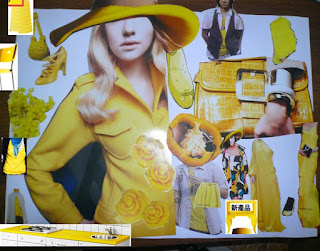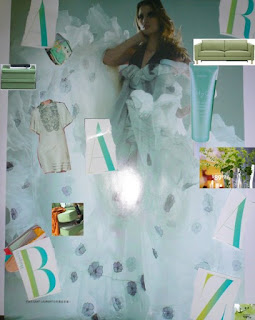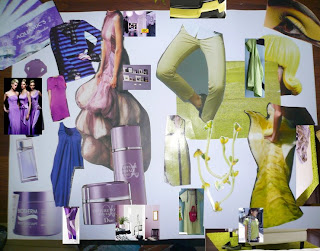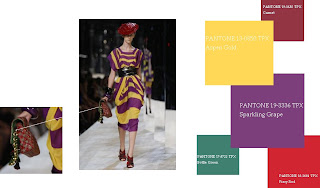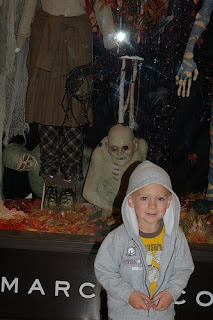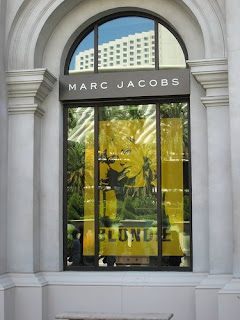2/17/2009
11/27/2008
Report
In this report, I will explain what I have learned and done. Through this lecture, I have learned much more about “COLOR”. Blue is not only as “Light Blue”, “Blue”, and “Deep Blue”. Now, I can identify Blue as blue-green, blue, or blue-violet. I have more adjectives to tell people what is the color by color theories.
Color is an external occurrence and an internal sensation. Surfaces appear colored because they reflect certain light waves which stimulate brain receptors. So a surface appears colored when an external event and an internal event combine into an experience.
Color defined in primaries (in yellow, red, blue), secondaries (in orange, violet, green) and tertiaies (in yellow-orange, red-orange, red-violet, blue-green, blue violet, yellow green). Then, those hues are all in Color Wheel. Color also expresses gender. Warm hues, light values, and soft intensities seem soft and feminine; cool hues, dark values, and bright intensities seem strong and masculine. Bright colors in sports uniforms are often seen as masculine. Western cultures consider pink as feminine and blue as masculine, oriental yin-yang considers light colors masculine and dark colors feminine; so associations often depend on culture.
See what colors people wear, and we can easily analysis where they come from. It is because different countries apply different colors. For instance, Chinese like wearing in red, especially in a Village. That is because the soil is always in yellow orange adding black (looks like the color of mud). That is why, red and yellow orange are very different color. Although they are not complementary color, they still make a big contrast.
On my project, I have explored and forecasting Marc Jacobs (Collection) by applying various color theories. American becomes more unity, due to the election of U.S. president. The main of hues of US’s flag will be more significant. At the result, my color scheme is Regatta (pantone 18-4039 TPX), Hibiscus (Pantone 18-1762 TPX), Dandelion (Pantone 13-0758 TPX), Purple impression (Pantone 17-3919 TPC), Sunny Lime (Pantone 12-0741 TPX), and Greengage (Pantone 14-0127 TPX).
I do some practices on my design with different color mix. I used analogous, triad and adjacent complementary color on my prediction of the collection of Marc Jacobs’ Fall Winter 09. Moreover, the principle of familiarity was applied that is based on the concept that familiarity is pleasing and readily accepted. As a result, color schemes based on nature will seem pleasing to most people. In addition, light and dark variation of the same color will harmonize.
In conclusion, I can easily apply color theories, monochromatic, analogous, complementary, adjacent complementary, double split complementary, etc. on my daily life. Moreover, I can use the principle of familiarity, the principle of novelty, etc. to analysis the color schemes of the advertisements, the collections, and the decoration of stores.
Color is an external occurrence and an internal sensation. Surfaces appear colored because they reflect certain light waves which stimulate brain receptors. So a surface appears colored when an external event and an internal event combine into an experience.
Color defined in primaries (in yellow, red, blue), secondaries (in orange, violet, green) and tertiaies (in yellow-orange, red-orange, red-violet, blue-green, blue violet, yellow green). Then, those hues are all in Color Wheel. Color also expresses gender. Warm hues, light values, and soft intensities seem soft and feminine; cool hues, dark values, and bright intensities seem strong and masculine. Bright colors in sports uniforms are often seen as masculine. Western cultures consider pink as feminine and blue as masculine, oriental yin-yang considers light colors masculine and dark colors feminine; so associations often depend on culture.
See what colors people wear, and we can easily analysis where they come from. It is because different countries apply different colors. For instance, Chinese like wearing in red, especially in a Village. That is because the soil is always in yellow orange adding black (looks like the color of mud). That is why, red and yellow orange are very different color. Although they are not complementary color, they still make a big contrast.
On my project, I have explored and forecasting Marc Jacobs (Collection) by applying various color theories. American becomes more unity, due to the election of U.S. president. The main of hues of US’s flag will be more significant. At the result, my color scheme is Regatta (pantone 18-4039 TPX), Hibiscus (Pantone 18-1762 TPX), Dandelion (Pantone 13-0758 TPX), Purple impression (Pantone 17-3919 TPC), Sunny Lime (Pantone 12-0741 TPX), and Greengage (Pantone 14-0127 TPX).
I do some practices on my design with different color mix. I used analogous, triad and adjacent complementary color on my prediction of the collection of Marc Jacobs’ Fall Winter 09. Moreover, the principle of familiarity was applied that is based on the concept that familiarity is pleasing and readily accepted. As a result, color schemes based on nature will seem pleasing to most people. In addition, light and dark variation of the same color will harmonize.
In conclusion, I can easily apply color theories, monochromatic, analogous, complementary, adjacent complementary, double split complementary, etc. on my daily life. Moreover, I can use the principle of familiarity, the principle of novelty, etc. to analysis the color schemes of the advertisements, the collections, and the decoration of stores.
my final project (final)
final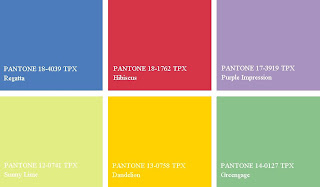
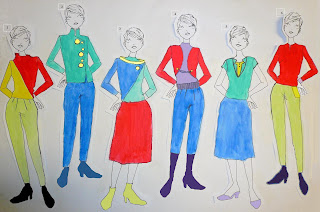


Priciple of Resemblance
Harmonious color, Less differences, Multiple colors of different hue and lightness
Analogous Color Schemes
1) Aggressive Colors: hibiscus (high chroma, contrast of value), dandclion (high chroma, contrast of value)
Receding Colors: sunny lime (constant chroma, low value)
2)
Aggressive Colors: dandclion (high chroma, contrast of value)
Receding Colors: greengage (high chroma, contrast of value), regatta (high chroma, contrast of value)
4)
Aggressive Colors: purple impression (constant chroma, low value), hibiscus (high chroma, contrast of value)
Receding Colors: regatta (high chroma, contrast of value)
5)
Aggressive Colors: purple impression (constant chroma, low value), dandclion (high chroma, contrast of value)
Receding Colors: greengage (constant chroma, low value), regatta (constant chroma, low value)
Triad + Analogous Color Schemes
3)
Aggressive Colors: hibiscus (high chroma, contrast of value), dandclion (high chroma, contrast of value)
Receding Colors: greengage (constant chroma, low value), regatta (constant chroma, low value)
Adjacent Complementary Color Schemes
6)
Aggressive Colors: hibiscus (high chroma, contrast of value), dandclion (high chroma, contrast of value), violet (high chroma, contrast of value)
Receding Colors: sunny lime (constant chroma, low value)
11/26/2008
11/23/2008
11/21/2008
11/20/2008
11/19/2008
11/18/2008
11/12/2008
11/09/2008
10/20/2008
Observe the dressing of people (2)
1. woman, live in Hong Kong, 30-35, OL lady, work in TST, married
2. man, live in Hong Kong and China, 40-45, management level, work in HK and China
3. lady, live in Hong Kong, 25-30, OL lady, work in Central, has a relationship
4. boy, live in Hong Kong, 22-25, a CityU Student, study in High diploma
5. girl, live in Hong Kong, 20-24, a CityU student, study in High diploma
10/16/2008
10/10/2008
Marc Jacob's Info
Born: on April 9, 1964 in New York City.
Education: Graduated from Parsons School of Design, New York, 1984.
Career: Designer, Sketchbook label, for Ruben Thomas Inc., New York, 1984-85; managed own firm, 1986-88; named vice president for womenswera, Perry Ellis, 1988; head designer, Perry Ellis, New York, 1989-93, Marc Jacobs, from 1994; Marc Jacobs Look, distributed by Mitsubishi and Renown Look, 1996; opened Marc Jacobs Boutique in SoHo, New York, 1997; artistic director, Louis Vuitton, from 1997; designed Stain Boy t-shirt to benefit Elizabeth Glaser Pediatric AIDS Foundation, 2000; introduced Marc, line of mid-priced sportswear, 2001.
Awards: Parsons School of Design Perry Ellis Golden Thimble award, 1984; Council of Fashion Designers of America Perry Ellis award, 1988; Womenswear Designer of the Year award, 1992, 1998.
Education: Graduated from Parsons School of Design, New York, 1984.
Career: Designer, Sketchbook label, for Ruben Thomas Inc., New York, 1984-85; managed own firm, 1986-88; named vice president for womenswera, Perry Ellis, 1988; head designer, Perry Ellis, New York, 1989-93, Marc Jacobs, from 1994; Marc Jacobs Look, distributed by Mitsubishi and Renown Look, 1996; opened Marc Jacobs Boutique in SoHo, New York, 1997; artistic director, Louis Vuitton, from 1997; designed Stain Boy t-shirt to benefit Elizabeth Glaser Pediatric AIDS Foundation, 2000; introduced Marc, line of mid-priced sportswear, 2001.
Awards: Parsons School of Design Perry Ellis Golden Thimble award, 1984; Council of Fashion Designers of America Perry Ellis award, 1988; Womenswear Designer of the Year award, 1992, 1998.
10/08/2008
Observe the dressing of people (1)
A black man@the street in Hung Hom
Long sleeve shirt with beige stripe
Black trousers with black belt
Black shoes
Golden watch
Golden wedding ring
age around 29-34/ his natural black hair - think he is from Indian/ married/ middle level class group/ works in jewelry company
Long sleeve shirt with beige stripe
Black trousers with black belt
Black shoes
Golden watch
Golden wedding ring
age around 29-34/ his natural black hair - think he is from Indian/ married/ middle level class group/ works in jewelry company
10/07/2008
Subscribe to:
Comments (Atom)
